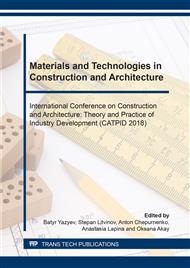p.883
p.891
p.897
p.901
p.905
p.910
p.914
p.920
p.926
Joint Calculation of the Non-Stationary Thermal Mode of a Building and its Water Heating System
Abstract:
The solution of the problem of joint cooling of the building and its water heating system, in case of the thermal energy supply termination, is relevant, since only it can determine the real time available to repair crews to restore the operation of the heating system of each object. The article gives a brief description of the algorithms for calculating the non-stationary hydraulic and thermal regime of the heating system and the algorithm for calculating the non-stationary thermal regime of the building. The joint implementation of both algorithms is based on taking into account the influence of the thermal regime of the system and the building on each other at each time step. Linking of thermal processes in a heating system and in a building is carried out taking into account in their thermal balances of the same quantity of heat flowing for a step on time from a heating system element to the room or vice versa. Calculations on the proposed PC program investigated the influence of different factors on the cooling time of the heating system and the whole building.
Info:
Periodical:
Pages:
905-909
Citation:
Online since:
September 2018
Authors:
Price:
Сopyright:
© 2018 Trans Tech Publications Ltd. All Rights Reserved
Share:
Citation:


